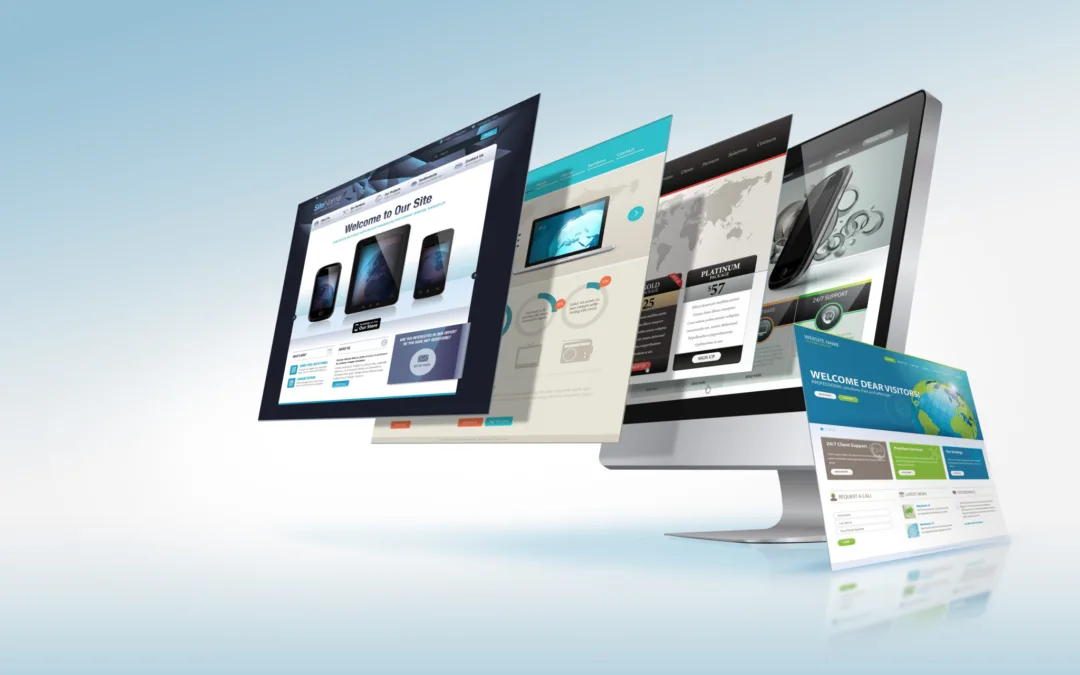Web Design Best Practices for Boosting Conversion Rates and Engagement
Web Design Best Practices for Boosting Conversion Rates and Engagement
Blog Article
Comprehending Customer Experience: Secret Concepts for Successful Website Design
In the realm of web design, understanding user experience (UX) is critical to producing platforms that not only draw in but additionally keep customers. Secret principles such as user-friendly navigating and reliable comments systems play essential roles in fostering user satisfaction. Additionally, considerations for ease of access guarantee that all users can involve with the web content flawlessly.
Value of Individual Experience

In the world of website design, one can not underestimate the significance of customer experience (UX) as a crucial aspect that directly influences the success of an internet site. A favorable UX not only enhances user satisfaction yet additionally promotes loyalty, motivating repeat sees and interactions. When users encounter a instinctive and appealing interface, they are more probable to discover the web content, convert right into clients, or share their experiences with others. This organic promo can considerably amplify a brand's reach and presence.
Moreover, the value of UX prolongs past mere aesthetic appeals. It incorporates the overall performance of an internet site, ensuring that navigation is smooth and information is quickly obtainable. Websites that prioritize UX are commonly perceived as more reliable and credible, which can have a profound effect on conversion prices. On the other hand, inadequate UX can lead to irritation, resulting in high bounce rates and lost chances.
Ultimately, purchasing user experience is not just a design choice; it is a calculated choice that can separate a brand in a crowded marketplace. By concentrating on UX, businesses can create meaningful interactions that reverberate with users, leading the way for continual success in the digital landscape.
Functionality Principles
Efficient internet layout depends upon the application of essential usability concepts that make certain an internet site is both user-friendly and useful. Central to these concepts is the idea of intuition, where individuals can navigate the website effortlessly without considerable direction. Clear navigation frameworks, including regular layouts and well-labeled food selections, improve this intuitive experience, enabling users to situate info swiftly.

Uniformity is similarly important; maintaining harmony in style elements, terms, and procedures throughout the website helps to minimize complication. Customers ought to not have to relearn how to engage with various sections of the web site.
In addition, error avoidance and healing are essential for use. Sites ought to be created to lessen the opportunity of individual errors, and when blunders happen, clear and positive mistake messages must guide individuals in the direction of resolution.
Access Factors To Consider
Making sure accessibility in website design is vital for creating inclusive electronic experiences that deal with all individuals, consisting of those with specials needs. Ease of access considerations include designing internet sites that accommodate diverse demands, enabling users with visual, auditory, cognitive, or electric motor problems to navigate and communicate properly.
To achieve this, web developers need to stick to established guidelines, such as the Internet Web Content Accessibility Guidelines (WCAG) These guidelines supply a structure for making material perceivable, operable, understandable, and durable. Key methods include making sure enough shade comparison, providing text options for non-text material, and guaranteeing key-board navigability.
In addition, semantic HTML needs to be utilized to enhance screen visitor compatibility, enabling individuals with aesthetic disabilities to understand the framework and significance of material without effort. web design. Supplying clear, succinct guidelines and using straightforward language can even more improve functionality for people with cognitive specials needs
Normal access screening, entailing actual customers with specials needs, is essential to identify barriers and improve the user experience. By focusing on access, internet developers not just conform with legal standards but likewise promote a more fair electronic landscape, eventually benefiting everyone via boosted functionality and interaction.
Visual Style Elements
A myriad of visual style elements plays an essential role in forming individual perceptions and experiences on an internet site. These aspects consist of color pattern, typography, format, whitespace, and imagery, each contributing to the total visual charm and effectiveness of a site.

Color design evoke feelings and can influence user activities; for example, warm colors might create a feeling of seriousness, while amazing look these up colors usually promote calmness. Typography, on the various other hand, affects readability and can develop a brand's personality - web design. The selection of font design and dimension have to align with the internet site's goals and target audience
Images, including images and icons, boosts storytelling and can dramatically affect customer interaction. Top quality visuals develop a sense of professionalism and reliability, while poor-quality photos might interfere with the customer experience.
Layout and whitespace are similarly important, as they assist customers through the web content. A well-structured layout assists customers discover details quickly, while appropriate whitespace prevents clutter, promoting a more delightful browsing experience.

Checking and Iteration
Customer testing and version are basic components of a successful web layout procedure. User testing entails observing how genuine individuals connect with a website, identifying functionality concerns, and understanding user actions.
Model, on the various other hand, is the process of refining the style based upon the understandings gained from individual testing. By making incremental modifications and re-evaluating the layout, groups can boost functionality, improve appearances, and maximize user engagement. This cyclical method promotes a society of constant enhancement, enabling designers to adjust to individual requirements and emerging trends efficiently.
Additionally, incorporating both individual testing and iteration into the design procedure brings about even more educated decision-making and eventually leads to a more user-centered product. By welcoming these concepts, web developers can produce much more intuitive, engaging, and reliable experiences that reverberate with their target audience, ultimately driving greater check over here individual fulfillment and retention.
Final Thought
In final thought, user experience is an essential element of reliable web style, incorporating usability, access, and aesthetic considerations. Continuous screening and iteration serve as important procedures for determining and resolving user pain factors, ensuring that internet designs remain adaptable to advancing needs.
In the realm of internet style, recognizing customer experience (UX) is critical to producing systems that not only attract try this however additionally retain users.In the realm of web style, one can not take too lightly the significance of user experience (UX) as a crucial element that directly influences the success of a site. Individual screening includes observing just how actual customers interact with a site, determining functionality problems, and comprehending customer behavior.In conclusion, individual experience is an important element of efficient internet style, including functionality, availability, and aesthetic considerations. Continuous testing and iteration serve as vital processes for identifying and addressing user pain points, making certain that internet layouts stay adaptable to developing needs.
Report this page